All posts by Lucy Simmonds, Content Marketing Specialist
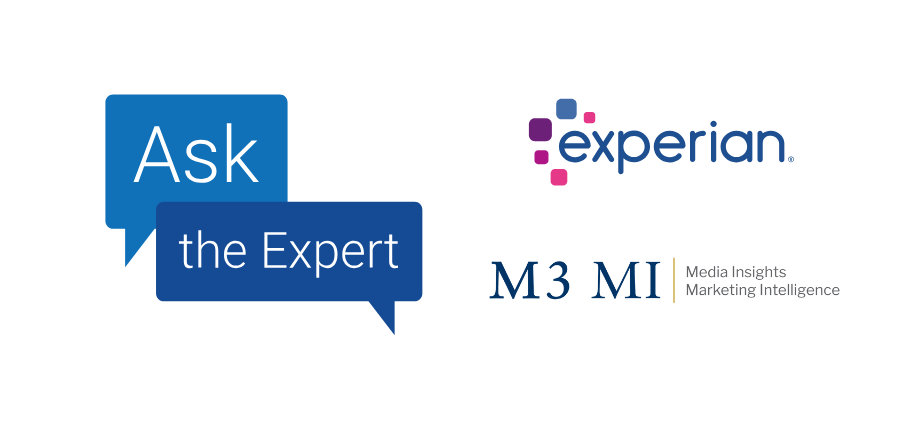
In our Ask the Expert Series, we interview leaders from our partner organizations who are helping lead their brands to new heights in AdTech. Today’s interview is with Dan Lynch a Senior Manager, Insights and Analysis at M3 MI, the company behind the MARS Consumer Health Study and MARS Audiences. Audience impact across health vertical Which healthcare advertisers see the greatest impact from MARS audiences? Could you share an example of how health marketers have successfully utilized your data to achieve specific campaign goals, such as patient engagement, awareness, or adherence? We’re seeing a clear shift in healthcare advertising away from generic, one-size-fits-all campaigns. With MARS, advertisers from pharmaceuticals, over-the-counter (OTC), health insurance companies, and hospitals are seeing the greatest impact by defining highly specific patient and caregiver personas and using those insights to build personalized media plans and deliver unique messaging by segment. As a result, our partners are seeing stronger engagement, increased ad recall, and more effective outcomes because they’re speaking directly to what matters most to each audience. Media agencies who utilize the MARS Consumer Health Study to build their strategic marketing plans are seeing a great impact by then taking those strategic targets and activating them. Those who are not activating those audiences are really missing out on bringing their strategy to consumer screens. Building stronger health campaigns with advanced segmentation What key health-related audience segments does MARS offer? While other competitors may offer caregiver segments by condition, we go further by layering engagement levels, such as caregivers actively involved in medical decisions or those who regularly discuss care with physicians. Similarly, for patients, we don’t stop at identifying over 60 health conditions; we add behavioral dimensions like whether they’re proactive in managing their health or primarily doctor-led. These nuanced attributes allow advertisers to craft personalized campaigns that resonate on a much deeper level. We can also look at patients that are willing to pay more for an Rx not covered by their insurance, which has been a trend with GLP-1s. How can health advertisers use these segments to craft more personalized and effective campaigns? Advertisers can use MARS’ advanced segmentation to move beyond simple demographics or condition-based targeting by layering behavioral and engagement attributes for greater relevance and impact. With MARS, a single condition can be the starting point for building multiple test-and-learn audiences to identify prime prospects. For example, GLP-1 patients have diverse treatment journeys; some pay out-of-pocket due to lack of insurance coverage, others switch brands for cost savings, and some purchase directly through patient websites. Each of these scenarios represents a distinct audience that can be created using MARS data, enabling highly personalized activation strategies. Data sourcing and quality How does MARS source and curate consumer data relevant to health audiences? Our audiences are survey-based, first-party data built from the MARS Consumer Health Study and Kantar’s trusted LifePoints Panel. We do not use medical claims, insurance data, or personal health records; our data is 100% self-reported. The study has over 5,000 different healthcare data points used to create syndicated and custom audiences. Our syndicated audiences are curated based on marketplace trends (e.g., we’ve added more information on GLP-1s), client feedback for enhancements to the MARS study, and reaching audiences medical claims data cannot (e.g., caregivers, treatment satisfaction, act based on healthcare advertising). What data quality standards do you follow, and how do you ensure consistency and reliability, especially for sensitive or regulated health-related data? M3 MI is part of M3 Global Research which is committed to transparency and high-quality data with ISO (International Organization for Standardization) certifications. These certifications demonstrate that our research practices align with international regulations. In a crowded data marketplace, what unique attributes set MARS apart, particularly for health advertisers? We don’t just identify patients or caregivers, we uncover their motivations, preferences, and behaviors, enabling advertisers to build highly targeted and meaningful audiences that competitors simply can’t replicate. The MARS Consumer Health Study offers an extensive range of data for audience building, spanning healthy living profiles, OTC, vitamins, and prescription purchasing behaviors, as well as media consumption habits and lifestyle activities. How MARS ensures regulatory compliance What measures does MARS take to maintain data privacy and regulatory compliance? We take a privacy-first approach to exceed all Network Advertising Initiative (NAI), Health Insurance Portability and Accountability Act (HIPAA), and California Consumer Privacy Act (CCPA) regulations. Since the data to build our audiences is self-reported via the MARS Consumer Health Study, we do not use PII data. We also take the following steps to maintain data privacy and compliance: State regulatory compliance: We proactively exclude survey respondents for audience seeds from certain states with consumer privacy laws that preclude audience data use Consent and transparency: Survey panelists are required to double-opt-in to all data usage terms before participating in the MARS study. Our panel partner’s privacy policy clearly explains use cases such as look-alike modeling and audience creation. Privacy-safe modeling: Data is scaled using propensity models built from an offline, people-based national consumer database. All seed survey data is removed from final models to eliminate any risk of re-identification, ensuring respondents are never targeted directly based on their survey responses. Click here for full details on M3 MI's privacy policy How do these efforts help advertisers navigate an evolving regulatory landscape while ensuring ethical standards? By relying solely on double opt-in, self-reported data, and removing identifiers, we guarantee that our approach is 100% privacy-safe and compliant. This gives advertisers confidence that our audiences are built on ethical, transparent practices without compromising consumer trust. Success stories Could you share a recent success story where a health advertiser achieved significant campaign improvements using M3 MI’s MARS data? What were the key factors behind that success, such as ROI, engagement lift, or conversion rates? One recent success story involved a diabetes medical device advertiser trying to breakthrough in a cluttered marketing landscape. Their initial broad, non-personalized media campaign delivered lower than expected digital engagement. To address this, the company conducted segmentation research and identified three distinct patient personas. However, the research lacked actionable media insights and a way to effectively reach these personas in the digital world. That’s where MARS data came in. Using the MARS Consumer Health Study, M3 MI mapped the existing personas to uncover each group’s unique media habits. These insights enabled the media agency to design tailored strategies for each persona. Additionally, M3 MI built custom, propensity-modeled persona audiences for activation across CTV, social, and display channels, ensuring precise targeting and personalized messaging. This strategic shift to personalized persona marketing transformed the campaign from a one-size-fits-all approach to a patient-first model. The company saw a significant lift in website engagement and a measurable increase in ROI. Resources to maximize your campaigns Where can readers find additional resources, case studies, or insights to learn more about MARS audience solutions? Interested healthcare marketers can explore additional resources by visiting our Audience Solutions page. There, they’ll find a comprehensive overview, a detailed taxonomy of syndicated audiences, and other helpful materials. For personalized support or further information on customized audiences, they can also reach us directly at info@M3-MI.com. Contact us About our expert Dan Lynch Senior Manager, Insights and Analysis, M3 MI Dan Lynch is a seasoned leader in strategic marketing insights and activation with over 20 years at healthcare focused media agencies. At M3 MI, he helps pharmaceutical companies, media partners, and agencies leverage our syndicated research to address critical business needs. Dan is also a lead of the MARS addressable audience initiative, applying his expertise in developing unique audience personas from our data and activating them across programmatic channels. About M3 MI M3 MI, a division of M3 USA, is the leading provider of unbiased syndicated research for the healthcare industry. We specialize in media measurement, advertising intelligence, and audience insights and activation. Leveraging robust datasets, rigorous methodologies, and decades of healthcare expertise, M3 MI delivers a deeper understanding of patients, caregivers, and healthcare professionals, their behaviors, attitudes, media habits, and communication preferences. These insights empower marketers to make informed, data-driven decisions. Latest posts
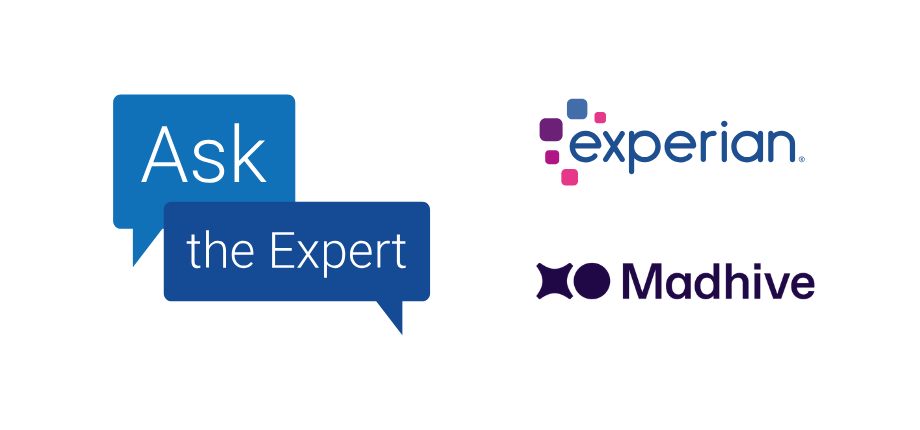
Identity-led local advertising that works Local advertisers run on tight budgets, short timelines, and constant pressure to prove what works. Every dollar must count. In this Ask the Expert session, Aaron Brown, Chief Scientist at Madhive, joins Ali Mack, VP of AdTech Sales at Experian, to discuss how the Maverick AI platform helps local advertisers make confident decisions, act on clear recommendations, and see outcomes they can stand behind. Why local campaigns demand accuracy, and how to deliver it Local teams juggle multiple channels, changing budgets, and heavy performance expectations. To stay competitive, local teams need quick answers to three critical questions: Which households are most valuable to reach? Which channels work best in their market? Are campaigns on on track, day by day? Delivering that level of accuracy means working from a single, trusted view of households, channels, and performance, powered by clean, connected, and continuously updated data. “When you think about local, these aren’t enormous budgets. These businesses depend on success from day one and are still finding their footing. There’s a wealth of nuanced information we need to hear from advertisers to ensure their campaigns succeed, and a wealth of insights we need to deliver back. It’s a real-time matching problem at scale to make sure everything runs profitably for our customers.”Aaron Brown, Chief Scientist Why Experian data is the foundation of local planning Data is the foundation of effective local advertising, but not all data is created equal. For local advertisers, the real advantage comes from high-quality, actionable data that pinpoints likely customers and reduces wasted spend. Experian Marketing Data provides the identity and insights spine that helps local advertisers: Identify the right households in each market Build consistent, people-based audiences across partners Activate with confidence and measure outcomes on the same foundation Madhive’s data marketplace builds on this identity layer, curating trusted data sets that advertisers can integrate directly into planning and activation. “We’re focused on creating perfect matches between businesses and consumers. The right data is critical, which is why we started the data marketplace. It’s a curated, opinionated take on the best data to drive outcomes for the companies that depend on us.”Aaron Brown, Chief Scientist Madhive's Maverick AI at the core of local advertising Madhive’s Maverick AI is the AI-powered operating system for local media. Built as a foundational layer behind Madhive’s entire workflow, Maverick AI connects the dots across planning, targeting, reporting, and storytelling. Its purpose is simple yet transformative: turn fragmented data and advertiser inputs into actionable insights at scale. What makes Maverick AI different? AI-driven intelligence It doesn’t just automate tasks; it analyzes signals, connects context across markets, and refines strategies as campaigns progress. Data connectivity Maverick AI integrates diverse data sources, including Experian’s trusted identity data, so local advertisers can target households with accuracy and measure outcomes confidently. Interactive transparency Beyond dashboards, Maverick AI works alongside sellers and advertisers, surfacing insights, flagging missing inputs, and turning transparency into clear next steps. Adaptability From structured KPIs to unstructured signals like lists of recent in-store buyers or priority ZIP codes, Maverick AI uses every clue to inform smarter, faster decisions. "Maverick AI exists to connect local advertisers with data like Experian’s. Its ability to collaborate and tell stories back to advertisers is one of its greatest strengths.”Aaron Brown, Chief Scientist How Maverick AI and Experian Marketing Data turn transparency into results Maverick AI turns performance transparency into aligned plans and faster optimizations for local advertisers and agencies. Paired with Experian’s identity data, advertisers get an accurate, household-level view of real people in real locations. That lets them build consistent local audiences, reach those audiences across connected television (CTV), social, and the open web, and confidently tie ad exposure back to outcomes that matter in each market. “Maverick AI is the foundational layer behind all our operations – targeting, reporting, and storytelling. It connects data across organizations and advertisers, including trusted data sources like Experian. AI works tirelessly to pick up context, connect the dots, and deliver great results end-to-end for our customers.”Aaron Brown, Chief Scientist Your next local campaign starts with Madhive and Experian Local advertising performance starts with a trusted identity foundation. With Experian data and Madhive’s Maverick AI platform, local advertisers can define the right households once, activate their campaigns across CTV and digital channels, and measure outcomes with confidence. Many brands are increasing investment in AI-powered planning to cut waste and grow on-target reach. Let’s work together to make your next campaign a success. Let's solve your local advertising challenges today About our experts Aaron Brown Chief Scientist, Madhive Aaron Brown is Chief Scientist at Madhive, where he leads Mad Labs, the company’s advanced innovation division. With a background spanning mathematics, computer science, and law, Aaron specializes in applying complex technical and theoretical breakthroughs to real-world business challenges. Before joining Madhive, he worked at the machine learning startup Intelligent Life. A graduate of Boston University with degrees in Mathematics and Computer Science, he also holds a J.D. from the University of Southern Queensland and lives in New York City. Ali Mack VP of AdTech Sales, Experian Ali Mack leads Experian’s AdTech business, overseeing global revenue across the company’s expansive tech and media portfolio. With over a decade of experience in digital and TV advertising, Ali drives strategic growth by aligning sales, customer success, and solutions teams to deliver impactful outcomes for clients and partners. She has successfully guided teams through two major acquisitions, integrating sales organizations and product portfolios into unified go-to-market strategies. Under her leadership, Experian has consistently exceeded revenue targets while fostering collaborative, results-driven teams and mentoring emerging leaders. Working closely with finance, product, and marketing, Ali develops strategies that support a diverse ecosystem of publishers, brands, and technology partners, positioning Experian at the forefront of data-driven advertising and identity resolution. FAQs What makes local advertising so challenging? Local advertisers face tight budgets, short timelines, and high pressure for results. They must reach the right households, tailor messaging, and optimize campaigns across zip codes. Experian’s data solutions and Madhive’s Maverick AI platform help overcome challenges like location targeting and data activation without losing signal. How does Madhive’s Maverick AI platform help advertisers achieve better results? Madhive’s Maverick AI platform centralizes operations, targeting, and reporting while enabling granular local planning at scale. It integrates Experian’s data to target households accurately, optimize campaigns across markets, and deliver measurable results, even for advertisers with limited budgets. How do Experian and Madhive foster collaboration in local advertising? Madhive’s Maverick AI platform provides transparency and clear recommendations, aligning advertisers on goals. Experian’s data solutions further enhance this process by providing a unified view of audience behavior, ensuring campaigns remain cohesive and effective across all channels. Latest posts
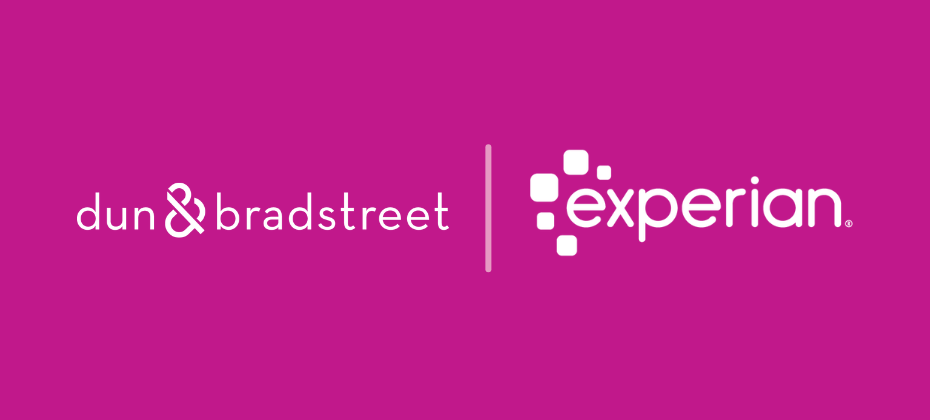
Audigent, a part of Experian, Dun & Bradstreet, and Experian are collaborating to help business-to-business (B2B) marketers target more effectively. Now, B2B marketers can reach verified decision-makers, keep the same audience across channels, and activate on connected TV (CTV) and digital via the Experian data marketplace. Together, Dun & Bradstreet’s trusted business data, Audigent’s curation and Deal ID activation, and Experian’s identity resolution drive efficient, measurable results.
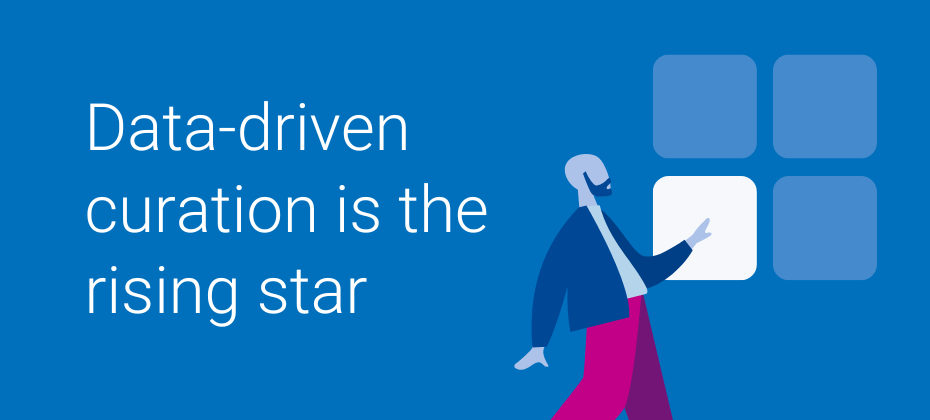
If you buy media today, you’re already feeling the shift: the best results don’t always come from broad, open auctions or static “safe site” lists; they’re coming from deals that combine the right data with the right inventory and let algorithms optimize in real time. That’s curation. And when it’s done right, it reduces data and media waste for buyers and raises eCPMs (effective cost per thousand impressions) and win rates for publishers. As part of our Cannes Content Studio series, leaders from Butler/Till, Index Exchange, OpenX, PubMatic, and Yieldmo discuss how curation cuts waste and lifts results. What is real curation? Real curation isn’t “packaging inventory.” It’s a strategic framework built on three pillars: 1. Unique data Privacy-compliant and accurate. 2. Strong supply connections Access to quality inventory from publishers at scale. 3. Optimization tools To measure, refine, and improve performance throughout the campaign lifecycle. Why it matters: Manual approaches hit a ceiling. They can’t react quickly to shifting content, identity signals, or auction dynamics. That’s where technology partners come in, keeping the optimization loop running continuously. Intelligence at every touchpoint Curation isn’t about shifting control between platforms. It’s about better brand decisions, connecting opportunity-rich supply to the brand’s preferred buying platform and enriching each buy with audience data. In practice, supply-side platforms (SSPs) are ingesting richer signals to route inventory more effectively and support frequency caps and deal prioritization, in collaboration with demand-side platforms (DSPs). "I think we’re seeing a shift toward bringing more DSP capabilities into the SSP, like supply-side targeting and data driven curation. Advancements in areas like CTV are enabling targeting based on content signals, and SSPs are pulling in more data to inform which supply is sent to the DSP, helping with things like frequency caps."Matt Sattel Why page-level targeting beats static lists Static domain lists were a useful first step for quality control. The intent was sound, but the approach was too cumbersome for today’s signal-rich buying. Today, AI and contextual engines read the page, not just the site, and adapt in real time. Page-level logic delivers three key benefits: Accuracy by targeting high-intent, page-level content. Relevance by matching the creative to both the content and the audience context. Speed by enabling campaigns to move away from underperforming pages in real time, without waiting for a manual trafficking change. "AI-driven contextual engines evaluate the page, not just the domain, to curate inventory in real time. That moves curation from static allowlists to adaptive logic for greater accuracy, relevance, and speed."Sophia Su Partnerships broaden who influences the buy Curation works when publishers, agencies, data partners, and platforms share signals and KPIs. Horizontal curation (across multiple SSPs) assembles broader, higher-quality reach and resilience, ideal for scale and diversity of supply. Vertical curation (an SSP’s in-house product) provides deep controls within a single exchange, useful for specific inventory strategies. Creative and data now shape supply and demand: better creative decisioning, tested against richer signals, improves outcomes. DSPs remain central for activation and pacing. But the sell-side’s growing intelligence means more accurate inventory routing and signal application before a bid ever fires. "Curation will continue to evolve through deeper data partnerships and expanded use across publishers and agencies, with more sophisticated types of optimization. DSPs will remain critical to activation, even as sell-side decisioning plays a larger role in identifying and shaping the supply to select."Mike McNeeley Curation delivers access and measurable performance Here’s what curated deals are delivering. For buyers ResultType of result36-81%savings on data segments10-70%lower cost per click (CPCs)1.5-3xhigher click-through rates (CTRs)10-30%higher video completion rates For publishers ResultType of result20%bid density118%win rate10%revenue on discovered inventory25%eCRM on incremental impressions Why it works: When data, supply, and optimization are integrated, you reduce waste, surface better impressions, and let algorithms compound your advantage. That’s why curated private marketplaces (PMPs) have grown at ~19% compound annual growth rate (CAGR) since 2019. "Publishers using supply-side curation see ~15% more diverse buyers and 20–25% better performance than buy-side-only targeting. Smarter packaging and signal application tighten auctions and strengthen outcomes."Howard Luks Holistic curation streamlines planning and outcomes Curation adds the data layer earlier in the buying process, starting at the supply-side. This creates more opportunities to reach the right audience and improves scale and performance. By replacing multiple line items with a single curated deal, campaign setup becomes faster and less error-prone. Curated deals also simplify measurement by including the necessary context for accurate attribution, while dynamic adjustments ensure campaigns remain optimized without requiring manual updates. "Publishers using supply-side curation see ~15% more diverse buyers and 20–25% better performance than buy-side-only targeting. Smarter packaging and signal application tighten auctions and strengthen outcomes."Gina Whelehan It’s much more streamlined, bringing more pieces together so we’re thoughtful and holistic. Adding the audience and data element creates more scale and strategy in how we curate supply and data, and ultimately better results for clients. The bottom line Curation has matured from buzzword to performance system. DSPs still anchor activation and pacing, but better sell-side pipes now pre-route inventory and apply signals before any bid starts, making the whole system faster and more accurate. When you combine unique signals, tight supply connections, and always-on optimization, you gain addressability, reduce waste, and achieve better business outcomes for both buyers and sellers. Curation isn’t just a trend; it’s where programmatic advertising is headed. Start testing curated PMPs today to see the difference for yourself. Explore curated PMPs with Audigent Curation FAQs What is curation in performance marketing? Curation in performance marketing is the process of combining data, inventory, and optimization to deliver better results. Audigent supports curated strategies through privacy-safe data and advanced integrations. How does curation benefit marketers? Curation reduces wasted spend by targeting high-quality impressions and optimizing campaigns in real time. Audigent’s solutions help marketers achieve higher click-through rates, lower costs, and better engagement across channels. What are curated PMPs, and why are they important? Curated PMPs are deals that use curated data and inventory to deliver measurable results. They help buyers save on data costs, improve ad performance, and achieve better video completion rates, while publishers see higher win rates and revenue. How does Audigent support curated strategies? Audigent provides unique data assets, privacy-safe integrations, and optimization tools that help marketers and publishers create curated deals. Our solutions ensure campaigns are more efficient, targeted, and effective from start to finish. What’s the difference between horizontal and vertical curation? Horizontal curation combines inventory across multiple platforms for broader reach and diversity, while vertical curation focuses on deep control within a single platform. Both approaches can be tailored to specific campaign goals with Audigent's expertise. Latest posts
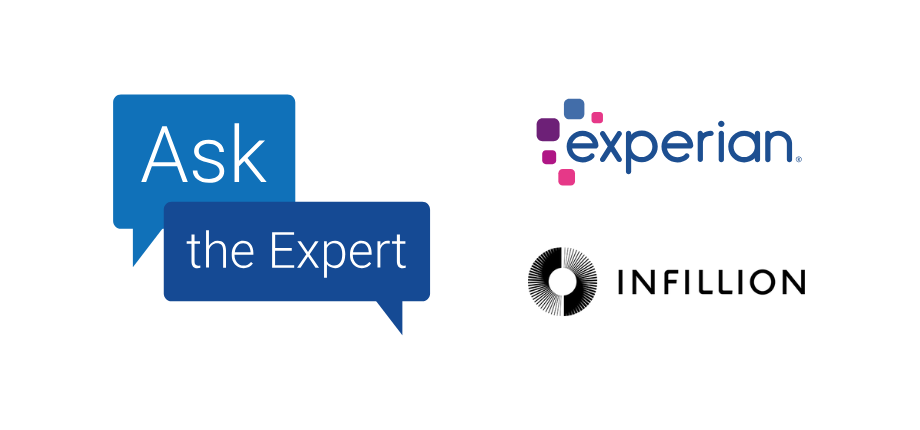
In our Ask the Expert Series, we interview leaders from our partner organizations who are helping lead their brands to new heights in AdTech. Today’s interview is with Ben Smith, VP of Product, Data Products at Infillion. Adapting to signal loss What does the Experian–Infillion integration mean for advertisers looking to reach audiences as signals fade? As cookies and mobile identifiers disappear, brands need a new way to find and reach their audiences. The Experian integration strengthens Infillion’s XGraph, a cookieless, interoperable identity graph that supports all major ID frameworks, unifying people and households across devices with privacy compliance, by providing a stronger identity foundation with household- and person-level data. This allows us to connect the dots deterministically and compliantly across devices and channels, including connected TV (CTV). The result is better match rates on your first-party data, more scalable reach in cookieless environments, and more effective frequency management across every screen. Connecting audiences across channels How does Experian’s Digital Graph strengthen Infillion’s ability to deliver addressable media across channels like CTV and mobile? Experian strengthens the household spine of XGraph, which means we can accurately connect CTV impressions to the people and devices in that home – then extend those connections to mobile and web. This lets us plan, activate, and measure campaigns at the right level: household for CTV, and person or device for mobile and web. The outcome is smarter reach, less waste from over-frequency, and campaigns that truly work together across channels. The value of earned attention Infillion has long championed “guaranteed attention” in advertising. How does that philosophy translate into measurable outcomes for brands? Our engagement formats, such as TrueX, are based on a simple principle: attention should be earned, not forced. Viewers choose to engage with the ad and complete an action, which means every impression represents real, voluntary attention rather than passive exposure. Because of that, we consistently see stronger completion rates, deeper engagement, and clearer downstream results – like lower acquisition costs, improved on-site behavior, and measurable brand lift. To take that a step further, we measure attention through UpLift, our real-time brand lift tool. UpLift helps quantify how exposure to a campaign influences awareness, consideration, or purchase intent, providing a more complete picture of how earned attention translates into business impact. Creative innovation and location insights Beyond identity resolution, what are some of Infillion’s capabilities, like advanced creative formats or location-based insights, that set you apart in the market? One key area is location intelligence, which combines privacy-safe geospatial insights with location-based targeting through our proprietary geofencing technology. This allows us to build custom, data-driven campaigns that connect media exposure to real-world outcomes – like store visits and dwell time – measured through Arrival, our in-house footfall attribution product. We also build custom audiences using a mix of zero-party survey data, first-party location-based segments, and bespoke audience builds aligned to each advertiser’s specific strategy. Then there’s creative innovation, which is a major differentiator for us. Our high-impact formats go beyond static display, such as interactive video units that let viewers explore products through hotspots or carousels, rich-media ads that feature polls, quizzes, dynamic distance, or gamified elements, and immersive experiences that encourage active participation rather than passive viewing. These creative formats not only capture attention but also generate deeper engagement and stronger performance for a variety of KPIs. Future ready media strategies How does Infillion’s ID-agnostic approach help brands future-proof their media strategies amid ongoing privacy and tech changes? We don’t put all our eggs in one basket. XGraph securely unifies multiple durable identifiers alongside our proprietary TrueX supply to strengthen CTV household reach. This agnostic design allows us to adapt as platforms, regulations, and browsers evolve – so you can preserve reach and measurement capabilities without getting locked into a single ID or losing coverage when the next signal deprecates. Raising the bar for media accountability Looking ahead, how is Infillion evolving its platform to meet the next wave of challenges in audience engagement and media accountability? From an engagement standpoint, we’re expanding our ability to support the full customer journey, offering ad experiences that move seamlessly from awareness to consideration to conversion. That includes smarter creative that adapts to context, intelligent targeting and retargeting informed by real data, and formats designed to drive measurable outcomes rather than just impressions. When it comes to accountability, we’re ensuring that measurement is both flexible and credible. In addition to our proprietary tools, we partner with leading third-party measurement providers to validate results and give advertisers confidence that their investment is truly performing. Within our DSP, we emphasize full transparency and log-level data access, ensuring advertisers can see exactly what’s happening on every impression. All of this builds toward the next era of agentic media buying – one enabled by our MCP suite and modular, component-based tools. This evolution brings greater accountability and next-generation audience engagement to an increasingly automated, intelligent media landscape. Our goal is to help brands connect more meaningfully with audiences while holding every impression – and every outcome – to a higher standard of transparency and effectiveness. Driving impact across the funnel What is a success story or use cases that demonstrate the impact of the Experian–Infillion integration? We recently partnered with a national veterans’ organization to raise awareness of its programs for injured or ill veterans and their families. Using the Experian integration, we combined persistent household- and person-level identifiers with cross-device activation to reach veteran and donor audiences more precisely across CTV, display, and rich media. The campaign achieved standout results – industry-leading engagement rates, a 99% video completion rate, and measurable lifts in both brand awareness (3.6 % increase) and donation consideration (13.7% lift). It’s a clear example of how stronger identity and smarter activation can drive meaningful outcomes across the full funnel. Contact us Identity resolution FAQs Why is identity resolution critical for CTV and cross-channel campaigns? Identity resolution ensures accurate connections between devices, households, and individuals. Experian's Offline Identity Resolution and Digital Graph strengthen these connections for improved targeting and consistent measurement across CTV, mobile, and web. What strategies help address the loss of cookies and mobile IDs? Solutions like Experian's Digital Graph enable brands to connect first-party data to household and person-level identifiers, ensuring scalable reach and compliant audience targeting legacy signals fade. How can engagement translate into measurable results? Focusing on earned attention (where audiences actively choose to engage) leads to stronger completion rates, improves on-site behavior, and drives measurable increases in brand awareness and consideration. What makes cross-channel targeting more effective? By linking CTV impressions to households and extending those connections to mobile and web, Experian's identity solutions ensure campaigns work together seamlessly, reducing over-frequency and improving overall reach. About our expert Ben Smith VP Product, Data Products, Infillion Ben Smith leads Infillion’s Data Products organization, delivering identity, audience, and measurement solutions across the platform. Previously, he was CEO and co-founder of Fysical, a location intelligence startup acquired by Infillion in 2019. About Infillion Infillion is the first fully composable advertising platform, built to solve the challenges of complexity, fragmentation, and opacity in the digital media ecosystem. With MediaMath at its core, Infillion’s modular approach enables advertisers to seamlessly integrate or independently deploy key components—including demand, data, creative, and supply. This flexibility allows brands, agencies, commerce and retail media networks, and resellers to create tailored, high-performance solutions without the constraints of traditional, all-or-nothing legacy systems. Latest posts
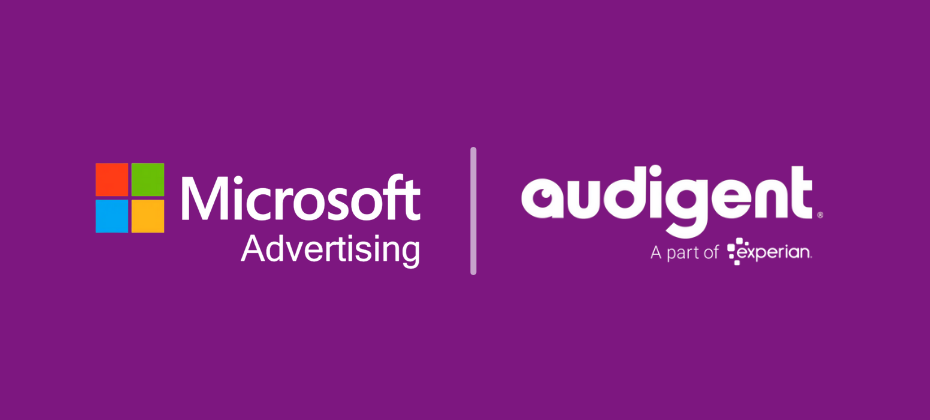
Audigent, a part of Experian, was named Microsoft Advertising’s Curator of the Year. The honor recognizes Audigent’s leadership for advancing privacy-safe, sell-side curation that packages high-quality audiences with premium supply for measurable campaign performance. Once only a buzzword, curation has become a mainstream strategy for activating advertisers’ first-party data and streamlining programmatic buying. To recognize this shift and the leaders driving it, Microsoft introduced Curate and established the Curator of the Year award to celebrate excellence in this category. Audigent was recognized for: End-to-end curation from audience planning through activation for outcomes-based, closed-loop programs. Breadth of deal and supply types using unique datasets, real-time supply connections and always-on optimization. Data-driven activation with curation across a large publisher footprint that utilizes Experian marketing data, first-party data, and partner audiences. Audigent’s unique, contextual, and predictive audience data solutions are built into all programmatic media buying. The combination of Audigent’s Real-Time Data and Curation Platform and first-party data, along with Experian identity and optimization, turns real engagement into ready-to-activate audiences. These audiences are available within Microsoft Curate and across omnichannel buying. "Audigent is proud to be named Microsoft Advertising’s Curator of the Year. This is a clear validation of the work our team has done to make curation the new standard in data-driven programmatic activation. We will continue to set the standard by expanding curated deals in Microsoft Curate. This will help maximize efficiency across the bidstream.”Chris Meredith, Head of Supply Side Partnerships Together, Experian and Audigent connect identity to inventory, enabling advertisers to reach the right audiences with precision and scale. By harnessing Experian identity and audience solutions and activating Audigent-curated deals in Microsoft Curate, brands can unlock new levels of efficiency and performance across every programmatic channel. This recognition sets the stage for even greater innovation, collaboration, and results in the year ahead. Ready to design your curated library? Let's connect Latest posts

Artificial intelligence (AI) is becoming a bigger part of modern advertising, changing how brands connect with people. At Experian, we believe this technology should make marketing more human, not less. We use AI to help marketers understand consumer behavior, respect privacy, and deliver messages that matter. As part of our latest Cannes Content Studio series, we spoke with leaders from AdRoll, MiQ, OpenX, Optable, PMG, PubMatic, and Yieldmo. Their insights show a clear path forward; one where technology supports human strategy to create more meaningful connections. 1. How does AI help you see audiences more clearly? AI decodes complex behavioral signals to reveal the values and mindsets behind decisions, and increasingly, it predicts what audiences will care about next. This allows marketers to deliver timely, relevant messages that resonate with audiences. At Experian, we help brands use these insights to connect more meaningfully and ethically. Takeaway: Experian’s tools help brands uncover audience insights, enabling more meaningful and ethical connections. 2. Where does AI actually save time, and improve results? Running campaigns is time-consuming. Solutions like Agentic AI now orchestrate end-to-end campaign workflows, audience building, trafficking, QA, pacing, and routine optimizations, so teams focus on strategy and creativity. Many leaders (94%) are investing broadly in AI to drive efficiency and impact, and 49% of marketers use it daily for image and video generation, shifting repetitive tasks from people to tools. By quickly combining past and current performance data, AI can pre-optimize before launch and refine mid-flight, while marketers steer the message and experience. "AI uses past campaign data to optimize performance before launch, continues learning during the campaign, and refines strategies based on the insights it generates, driving better results over time.”Howard Luks Takeaway: Experian’s solutions streamline campaign workflows, allowing marketers to focus on creativity and strategy while improving results. 3. How do AI and human strategy work together in real time? AI handles real-time data analysis and optimization, freeing marketers to focus on strategy, messaging, and creativity. By defining audiences once and activating them across platforms, teams can adapt quickly and confidently. At Experian, we combine machine intelligence with human insight to deliver smarter, more agile campaigns. “AI analyzes data, pulls insights, and automates optimizations, allowing marketers to focus on strategy, messaging, and creativity instead of spending time digging through numbers and data."Lizzie Chapman Takeaway: Experian solutions empower marketers to adapt quickly and confidently, combining human strategy with insights. 4. What does privacy-first look like now? Relying on simple, static data points is no longer enough. A modern approach to identity blends deterministic data (like known identifiers) with modeled components, ensuring data remains de-identified where possible. Clear, transparent guardrails, permitted-use policies, retention limits, sensitive-category blocks, and audit trails, help brands balance personalization with privacy, build trust, and respect user choice. "A new blend of identity systems combines deterministic data, known identifiers, and model driven components, creating fresh ways to address identity and activate campaigns with precision.” Vlad Stesin Takeaway: Experian’s privacy-first identity solutions help brands balance personalization with safety, ensuring trust and compliance. 5. Which new data signals matter, and why? AI is unlocking a new generation of data signals, like content context, sentiment, emotional tone, suitability, attention, and commerce intent, that go beyond legacy identifiers like cookies and demographics. These signals can help brand messages appear in the most relevant environments and by high-value audiences. Used well, they improve relevance, avoid placements near unsuitable or off-brand content, and drive stronger campaign outcomes. "Unlocking new data sets (like emotion, sentiment, and context), AI is creating innovative ways to connect client content with advertising opportunities and rethink how we approach the market.” Sam Bloom Takeaway: Experian’s solutions use advanced data signals to help marketers create more effective and innovative campaigns. Why Experian for human-centered AI? We deliver on the promise of AI-powered marketing through five pillars: See audiences clearly across households, individuals, and devices. Recommend next‑best audiences and automate setup for faster execution. Adapt in real‑time to keep relevance high. Innovate responsibly with strong governance and transparency. Plan, activate, and measure campaigns on one unified platform. The future of intelligent marketing AI will keep accelerating, but the goal stands: make marketing more human. Teams that blend privacy‑first identity, predictive insight, AI‑powered simplicity, and real‑time intelligence will earn trust and drive outcomes. Experian helps you bring those pieces together so every campaign moves from assumptions to clarity, and from activity to measurable results. Talk to Experian about building human-centered AI into your marketing strategy AI marketing trends FAQs How does AI help marketers understand audiences better? AI analyzes complex signals, behaviors, values, and mindsets to provide a clearer picture of what matters to audiences. That clarity makes messaging feel personal and relevant. Learn more about Experian’s Digital Graph and how it can help marketers understand audiences better. Where is AI improving campaign efficiency today? Automation reduces manual setup and reporting, so teams focus on strategy and creative. Nearly half of marketers (49%) use AI daily for image and video generation, reflecting this shift. What does “smarter activation across platforms” mean? Smarter activation across platforms means defining audiences once, then carrying them across channels with live feedback, so relevance and suitability stay high. See how Experian enables smarter activation with our data and identity solutions. How is AI changing identity? Privacy‑first identity blends deterministic and modeled components, keeping data de‑identified where possible. Experian’s solutions balance personalization with safety. Learn about Experian’s identity solutions is changing identity. Why is structured data important for AI‑driven marketing? AI systems rely heavily on brand‑managed sources. 86% of citations come from websites, listings, and reviews, so clean, accurate, structured data makes your answers and your brand more discoverable. Discover how Experian supports structured data for AI-driven marketing. Latest posts
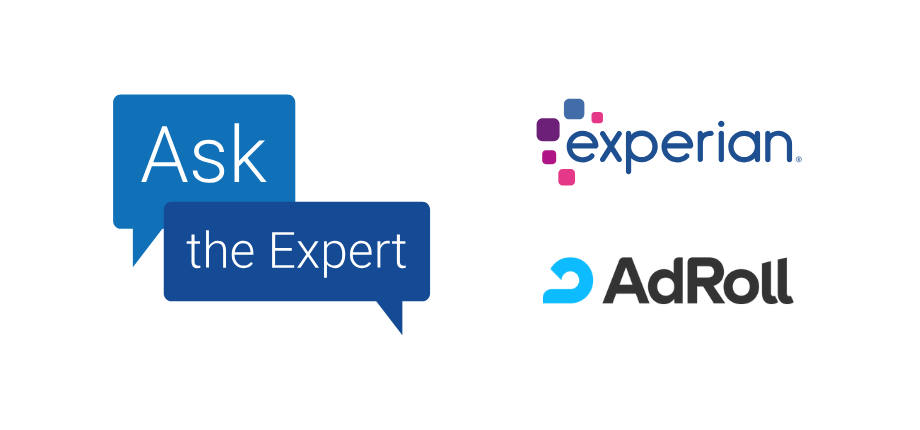
In our Ask the Expert Series, we interview leaders from our partner organizations who are helping lead their brands to new heights in AdTech. Today’s interview is with George Castrissiades, General Manager of Connected TV at AdRoll. Premium reach and fragmentation As viewer attention fragments across platforms, how should marketers redefine “premium reach” in CTV to prioritize engagement and audience quality over scale alone? A few years ago, ad supported streaming over-indexed on younger adults, those without much financial history and much more budget conscious. It would have been fair for B2B brands to assume that maybe they weren’t going to find their C-Suite audiences on those channels, and so connected TV(CTV) was positioned as a top of funnel tactic aimed at retail. But that’s all changed - ad-free prices are going up, and ad supported tiers are the norm across the majority of channels. 66% of adults have at least one ad supported streaming channel, and adults today spend nearly as much time streaming movies and TV as they spend on their mobile phones. Now that ad viewing audiences on CTV really span the full spectrum of demo, techno, and firmographic segments, savvy marketers should partner with platforms that offer breadth and depth of targeting and measurement to find the highest value audiences wherever they’re watching CTV and serve them highly relevant ads that draw their attention towards the screen. I know I’m jumping out of my seat whenever I see an AdTech or MarTech ad. Identity and relevance What does a strong identity framework unlock for delivering household- and person-level relevance across screens, and how does it reshape audience planning? In privacy-safe ecosystems, people want to share less data and log in to websites and browsers less frequently. If you can’t resolve a household ID to a CTV device through Safari and other sources of obfuscated identity, you’re going to end up losing a lot of signal along the way. On top of that, targeting smaller, higher-value audiences means this attrition can have a profound impact on your ability to build meaningful reach and use audience forecasts to predict scale. A strong identity framework is the key to maintaining as much of your planned audience as possible and staying true to initial forecasts. AI and outcome planning How is AI evolving CTV from tactical bidding to strategic outcome planning, and what mechanisms are in place to validate true performance lift? Tomorrow isn’t guaranteed, especially not in advertising. Audiences change where and when they consume media, and so shifting budget to a placement that did well yesterday is like buying a stock when it’s outperforming - the gains might be gone by then! Predictive AI is bridging the gap to find the highest value and most engaged audiences in real time, versus being purely reactive. This helps drive outcomes which we see in the form of pipeline influence, ROAS, and site traffic lift - without exponentially increasing costs. The same is true for account-based marketing(ABM) outcomes - there’s a blend of signals, account “fit” and intent data that needs to be evaluated in a deeper, more intelligent way. AI is helping to find those highest value accounts, even before they’re in market, which means smart marketers aren’t showing up late to the party. Measurement and incrementality What privacy-safe, closed-loop measurement frameworks should become standard to prove incremental visits and sales from CTV campaigns? Working with a dedicated multichannel, full-funnel ad and marketing platform like AdRoll can easily let you know when a user arrives at your site and makes a purchase, but understanding how that customer arrived there and which tactics deserve the credit requires a deeper, more sophisticated workflow. Our partnership with Experian allows all devices in a household to ladder back up to a household ID, so we can ensure accuracy without pivoting on anything personally identifiable. This works perfectly in CTV, an environment that follows an app workflow of user resettable device IDs rather than IP address or email but always connects seamlessly to web tokens including cookies. Accuracy, scale, and privacy are maintained in a proven way - you see this tech underpinning the infrastructure of streaming across all the biggest players, so marketers can rest easy. Creative and commerce How can creative sequencing and shoppable TV experiences convert living-room attention into commerce without compromising user experience or feeling intrusive? I like to say that CTV trades attention for action. Users lean back and focus on the messaging and visuals of the big screen rather than scrambling for the mouse or tapping to close some intrusive pop-up. This focus means that the messaging is absorbed more quickly, but creatives can wear out their welcome just as fast. Sequential messaging really helps to move the messaging along without subjecting the viewer to longer ads where attention wanes, but also increases brand recall and specific product information because the story evolves with each impression. This is a great tactic to use when you want a viewer to take a specific action later - but shoppable ads can help motivate a user to act now, and new formats can really simplify things. Shoppable can feel out of range for most - the top players in this space own major e-comm storefronts and then tie them back into their own demand-side platforms (DSPs), content, and streaming devices. For the rest of us, dipping our toes in slowly through simple and cheap solutions like QR codes can connect audiences right to a web experience from their TVs, or intermediate solutions like interactive video ads. Users love to play around with fun on-screen experiences, and there’s a whole spectrum of crawl/walk/run options available. Trust and governance Which shared guardrails—brand safety, fraud control, and frequency management- are essential to unlocking sustainable, scaled investment in CTV? I’ve always thought of CTV inventory analogously to high-end watches - if you buy from the source or a well-known, reputable dealer, you’re probably buying the real thing. But that fancy timepiece the guy was selling outside the bar, that you swore looked real? Probably not. Untrusted resellers and too-good-to-be-true pricing might mean you’re running ads on a screen at a lonely gas station at 3 am to an audience of no one, and that's not even the worst case scenario. Good relationships and deep pockets can solve brand safety and fraud issues, but not every advertiser is going to have those resources. Brand safety and fraud prevention can reduce workload and help distinguish the good stuff from the growing pool of gray area, arguably, CTV inventory that isn’t what was promised to a customer. Outsourcing this trust also goes a long way, with buyers knowing you’re not grading your own homework. Frequency management is equally as important. Once you have your audience and your good supply, it’s important not to abuse a single household just because they meet your targeting criteria. Reach is your best friend with CTV. Data and audience strategy How do Experian’s syndicated audiences provide a consistent, scalable foundation for planning, activation, and measurement across CTV and digital, and what outcomes are clients seeing? We love to talk about how Experian’s data is such an integral part of so much of streaming’s architecture, and the fact that it’s built on deterministic datasets means you’re getting scaled audiences built on knowledge rather than best guesses. That means a lot when working across multiple channels, privacy-safe environments, and households with an ever-growing number of connected devices. Our customers are always delighted at how precise targeting can be, especially in the B2B/B2C space - and knowing the size of those audiences helps them to understand how budget transforms into reach in a more predictable way. It’s confidence-inspiring to point to a new audience and tell your client that these are their future customers. The best part is showing them the outcomes reporting - we consistently see a massive spike in site traffic and engagement on days when a new Experian syndicated audience is launched! Contact us FAQs Why is identity resolution important in CTV? Identity resolution ensures marketers can connect devices and maintain audience accuracy. Experian's identity solutions help reduce data loss and improve audience forecasts, making campaigns more effective. How can marketers find the right audiences on CTV? With viewer attention spread across platforms, marketers need tools that offer both broad and detailed targeting. Experian's syndicated audiences provide reliable, scalable data to help identify and reach high-value audiences across channels. How can creative strategies improve CTV campaigns? Techniques like sequential messaging and shoppable ads keep viewers engaged and encourage action. Simple tools like QR codes or interactive video ads can connect audiences to web experiences directly from their TVs. How do DSPs benefit from strong identity frameworks in CTV? Strong identity frameworks help DSPs maintain accurate targeting and audience reach, even in privacy-focused environments. By connecting devices to household IDs, solutions like Experian’s Digital Graph ensure DSPs can deliver relevant ads and measure performance effectively across channels. About our expert George Castrissiades General Manager of Connected TV, AdRoll George leads the CTV go-to-market strategy at NextRoll, driving rapid growth and adoption of the channel for both B2B and B2C customers. With a track record of building and scaling CTV solutions, he is focused on developing a strategic playbook that accelerates success in the evolving digital advertising landscape. Before joining NextRoll, George spearheaded CTV product innovation at iSpot.tv and held leadership roles in product and operations at YouTube, VICE Media, Crackle, Roku, and Innovid. His expertise spans product development, monetization, and market expansion. About AdRoll AdRoll is a connected advertising platform built for growth-minded marketers. With powerful AI, flexible campaign tools, and seamless integrations, AdRoll helps mid-sized businesses turn complexity into clarity and clicks into customers. The AdRoll platform delivers full-funnel performance through multi-channel advertising, audience insights, and cross-channel attribution, supporting marketers across industries including ecommerce, technology, financial services, education, and more. For B2B teams, AdRoll ABM extends these capabilities with account-based precision, multi-touch campaigns, and real-time buyer intelligence. Backed by nearly 20 years of data and award-winning support, AdRoll enables marketing teams to advertise smarter, move faster, and achieve more, all from one place. Latest posts
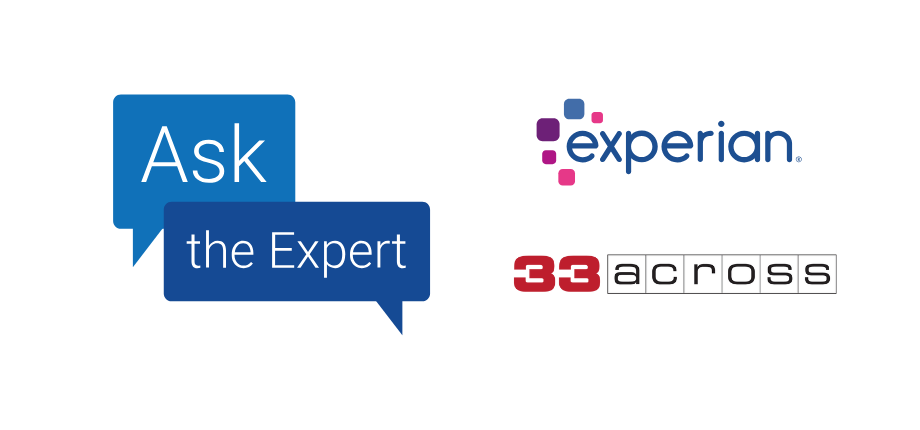
In our Ask the Expert Series, we interview leaders from our partner organizations who are helping lead their brands to new heights in AdTech. Today’s interview is with Allison Dewey (Director, Data & Curation) at 33Across. Navigating complexity in digital advertising Digital advertising is more fragmented and privacy-constrained than ever. How is 33Across helping marketers cut through that complexity to drive real outcomes, and what makes your approach distinct? Reaching audiences without compromising scale or performance is one of the toughest challenges for marketers. Users consume content across multiple devices and channels, making it difficult for marketers to identify and accurately target them with the right message. 33Across segments leverage AI-powered contextual and behavioral signals across privacy-safe environments to help marketers accurately identify audiences, whether they’re streaming content on their connected TV or researching products on their mobile device. What sets us apart is that we don’t just identify valuable audiences; we help marketers also target cookieless inventory and power it with real-time signals. Marketplace integration milestones What excites you most about bringing 33Across audiences into Experian’s data marketplace? We’re excited to bring 33Across audiences into Experian’s data marketplace because it connects our unique segments with a powerful data ecosystem that marketers already trust. Buyers looking to activate audiences that are both privacy-safe and performant continue to tap into the Experian data marketplace for high-quality, high-performing data. We offer a wide range of audience verticals, including B2B, demographic, retail purchase data, interest and intent, and political data. In addition, we offer the ability to create custom segments across verticals. Our intent-based audiences, built from contextual and engagement signals, help buyers reach consumers on CTV, desktop, or mobile devices with scale. Being part of Experian’s data marketplace accelerates access to these audiences, drives better ROI, and helps brands future-proof their strategies today. Retail demand signals Retail brands are racing toward privacy-safe, first-party data. Which 33Across retail datasets or segments are experiencing the highest demand, and what makes them a must-have? Retail marketers are leaning into contextual and behavioral intent signals to complement their first-party data strategies. At 33Across, we’re seeing high demand for segments tied to shopping intent, including in-market consumers browsing for categories like fashion, home goods, electronics, and health & wellness. What makes these segments essential is their real-time nature - they can capture consumer interest as it happens. For retail brands looking to expand their reach while respecting privacy, our segments offer scalable, actionable intent that drives results. B2B without cookies Reaching real B2B decision-makers at scale is tough with or without signals. How does 33Across deliver both precision and reach in this environment? B2B marketing often struggles with balancing scale and specificity. 33Across addresses this by combining contextual precision with AI-modeled behavioral signals; this segment approach reaches professionals actively engaging with relevant content and topics, even in environments where IDs are unavailable. Marketers gain access to more signals and, in turn, better reach from 33Across’ unique publisher integrations and audience curation built from machine learning and AI. We surface intent through content consumption patterns and contextual engagement, unlocking valuable, privacy-safe signals at scale. Allowing B2B marketers to reach real decision-makers in a signal-sparse world. Use cases With retail, B2B, and beyond, can you share an example of how brands in these verticals are utilizing your audiences? Top brands that have a user-focused approach use 33Across audiences to drive scale; performance. These brands enable our segments to precisely reach the right users across devices and increase conversion rates; brand awareness. By reaching the right users, brands have higher conversion rates and increase campaign efficiency. Supply path innovation As identifiers disappear, advertisers are looking for scalable, privacy-safe ways to reach real people. How is 33Across helping unlock more addressable inventory and drive performance? By combining contextual, semantic, and engagement-based signals, we deliver intent-based targeting that performs across CTV, display and video. Higher addressability helps marketers not only extend their reach but also deliver personalized messaging across digital channels in a privacy-compliant way. Contact us About our expert Allison Dewey Director of Data and Curation, 33Across Allison Dewey is the Director of Data & Curation at 33Across, where she oversees data partnerships, integrations, and supply-side curation. With a deep expertise in audience targeting and signal optimization, Allison plays a key role in connecting data into the programmatic world. Allison holds a Bachelor's degree in Psychology from Bates College. About 33Across Rooted in over 15 years of data expertise, 33Across harnesses signals to enrich and expand marketers’ audiences and reach them wherever they consume content. Built from over 300 billion proprietary data signals, we apply machine learning and AI to create over 1,500 B2C and B2B segments using privacy-first principles to reach audiences. Cookieless targeting FAQs How can advertisers reach audiences without traditional identifiers? By using contextual and engagement-based signals, advertisers can target consumers across CTV, mobile, and desktop in a privacy compliant way, even as identifiers become less available. What audience segments are most in demand for retail marketers? Segments tied to shopping intent, such as consumers browsing fashion, electronics, or health products, are highly sought after because they capture real time interest and drive results. How can B2B marketers find decision-makers without cookies? Combining content engagement patterns with machine learning allows marketers to reach professionals actively engaging with relevant topics, even in environments where IDs are unavailable. What makes privacy safe audience targeting effective? Privacy safe targeting uses real time contextual and behavioral signals to deliver relevant messaging across devices and channels without compromising consumer trust. How can real-time intent signals drive demand? Real time intent signals allow advertisers to capture consumer interest as it happens, helping demand side platforms and brands deliver timely, relevant ads that increase engagement and drive conversions across devices like CTV, mobile, and desktop. Latest posts
